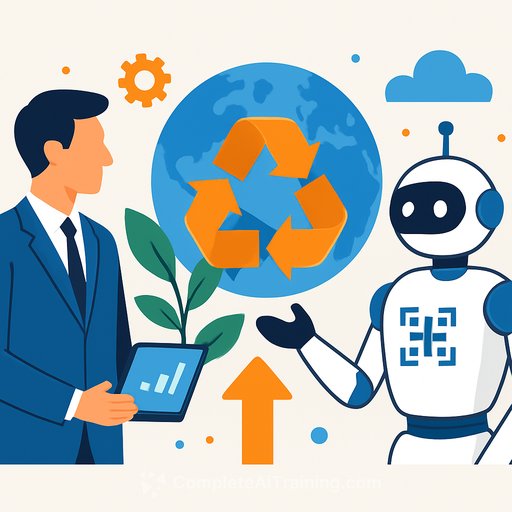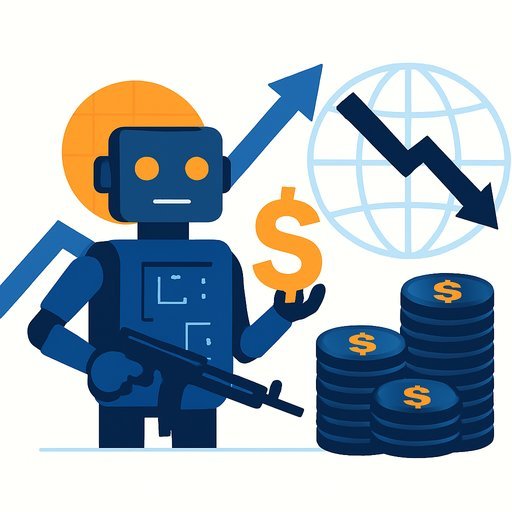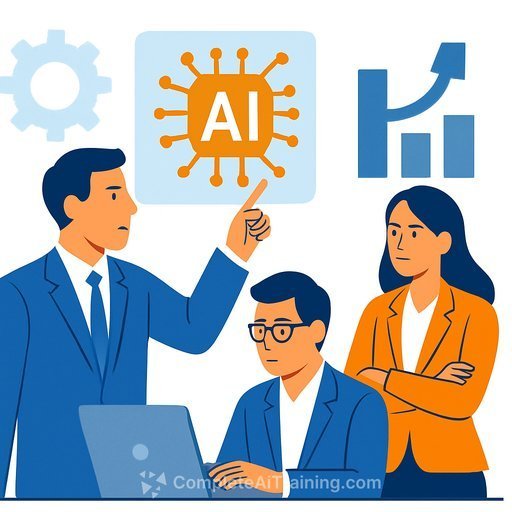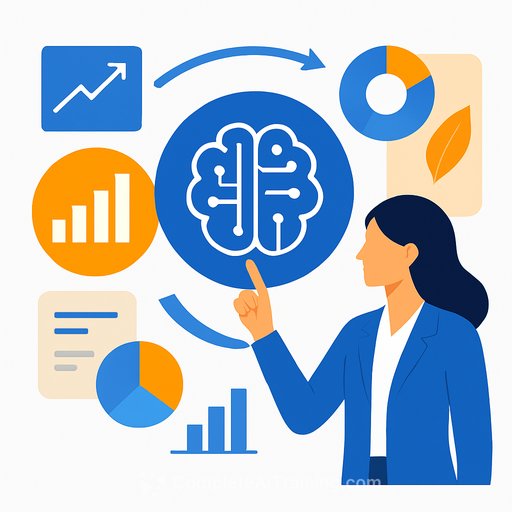AI-Fueled Foresight: Turning Sustainability Into Competitive Strategy
Across boardrooms, sustainability has moved from "reporting" to "strategy." Executives are treating it as a growth lever, not a checkbox. Recent studies show 83% increased sustainability investment in the past year and 81% are already using AI to support it. More than half of CEOs are adjusting business models to manage climate and social risks, while boards link sustainability metrics to long-term financial performance.
The shift is clear: from compliance to capability, and from reporting to readiness.
The End of Backward-Looking Sustainability
Most sustainability work still looks in the rearview mirror. It tracks emissions, energy use, or diversity metrics after the fact. Useful, yes-but doesn't tell leaders where risk and opportunity show up next.
AI changes the tempo. Language models scan research, policy drafts, and news for early signals. Machine learning connects supply risk, market volatility, and environmental constraints. The job shifts from describing the past to anticipating what's coming.
With dynamic foresight, leaders can run "what if" simulations-raw material scarcity, regulation shifts, social sentiment, climate events-and convert findings into actions before disruption hits.
From Digital Efficiency to Strategic Intelligence
Yesterday's digital programs focused on process efficiency. They managed the known. Today, AI links data from sensors, ESG disclosures, suppliers, and markets into patterns humans would miss. Technology evolves from cost control to strategic insight.
In manufacturing, teams assess product footprint during design, not after production. By integrating lifecycle data, supplier emissions, and logistics patterns, they pick lower-impact materials early-turning sustainability into a design advantage.
Make Sustainability Strategic (Not Side Work)
Many companies have data and goals but weak connection between daily choices and long-term direction. Foresight methods-horizon scanning, weak signal detection, scenario modeling-tighten that link. AI compounds the effect by processing volumes of external and internal data in near real time.
Consider materials policy risk. Pair AI-driven market analysis with sustainability foresight to anticipate policy changes that could choke supply. Redesign with recyclable components and substitutions now, and you create first-mover advantage later. AI doesn't replace strategy-it expands it.
Energy and Infrastructure: Anticipate the Speed of Transition
The direction to decarbonization is obvious. Timing isn't. AI integrates physical asset data, climate models, and regulation to test how scenarios affect grid stability, investment portfolios, and regional demand.
Forecasting systems can evaluate future carbon pricing and update assumptions as policy and commodity signals shift. This turns sustainability from an annual reporting cycle into an ongoing strategy process.
Technology Sector: Responsible AI as a Design Principle
AI boosts efficiency and opens new business models, but it can raise energy use and amplify bias. Responsible innovation needs foresight, not wishful thinking. Teams can simulate environmental and social impacts before rollout and model how data governance choices affect trust, privacy, and fairness.
Policy frameworks such as the EU AI Act and the OECD AI Principles set guardrails. The leaders treat ethical AI as a core design choice and a market differentiator.
What Research and Practice Are Showing
Trends across technology, geopolitics, and society are redefining what sustainable business means. Awareness is up. Decision systems lag. Data sits in silos, and foresight capabilities are still maturing.
AI can close the gap by connecting internal operations, ESG metrics, and external signals into unified models that inform cross-functional decisions. In energy, teams already test how climate adaptation policies change economic and resilience outcomes, improving investment choices and reframing "success" as long-term viability.
The AI-Foresight Loop
Embed foresight into the way the company makes decisions-not as a report, but as a loop.
- Scan: Use AI to monitor policy, research, markets, and public sentiment across global data streams.
- Sense: Analytics separate weak signals from noise and surface material patterns.
- Simulate: Scenario models test how sustainability drivers interact and evolve.
- Strategize: Feed insights into investments, product roadmaps, supply decisions, and governance-then repeat.
Leadership and Governance for Predictive Sustainability
This isn't just a tech rollout. Executives need to make space for long-term thinking while meeting quarterly demands. Boards should require transparency, explainability, and ethics in AI systems. Cross-functional teams-data science, strategy, procurement, operations, sustainability-must work as one.
Many firms are appointing foresight roles and embedding AI-driven scanning into planning cycles. Sustainability becomes a shared responsibility, not a silo.
90-Day Action Plan for Executives
- Weeks 1-2: Define the 5-7 uncertainties that matter most (policy, input costs, demand, extreme weather). Pick 3-5 leading signals to track. Link 3 sustainability metrics directly to financial outcomes.
- Weeks 2-4: Inventory data. Connect 2-3 internal sources (ERP, emissions, supply risk) with 2 external feeds (policy tracker, market data). Set governance: model documentation, bias checks, escalation paths.
- Weeks 4-8: Build one scenario model for a top product or asset. Run war-games with finance, operations, and sales. Pre-commit trigger-based actions (e.g., supplier switch at threshold X, price change at signal Y).
- Weeks 8-12: Pilot the AI-Foresight Loop in one business unit. Tie outcomes to capital allocation and roadmap decisions. Review with the board and scale with clear owner, cadence, and KPIs.
If your leadership team needs a fast upskill on AI strategy and use cases, see the executive-focused programs at Complete AI Training.
A Strategic Call to Action
The companies that win the sustainability transition combine AI capability with foresight. In manufacturing, that means designing circular models that anticipate material and energy constraints. In energy and infrastructure, it means using predictive insight to steer long-term investment and risk. In tech, it means building ethical AI into product design and governance.
AI isn't a crystal ball, but it helps you see the outlines sooner. Used with intent, it becomes a practical instrument for handling complexity. Sustainability is no longer about reporting what happened. It's about preparing for what comes next-and acting before the window closes.
Your membership also unlocks:






